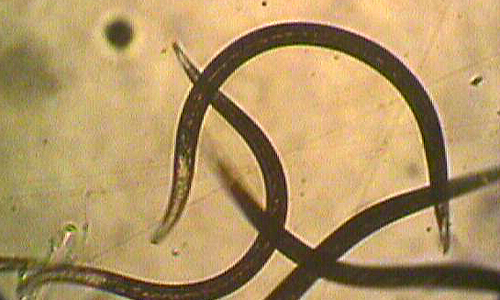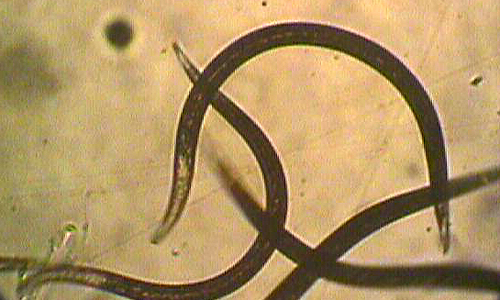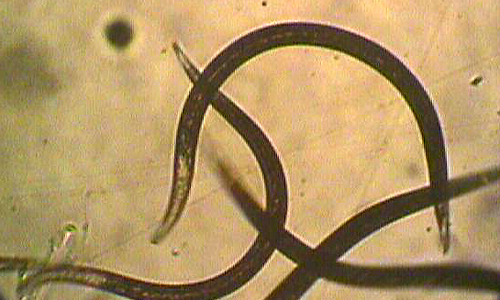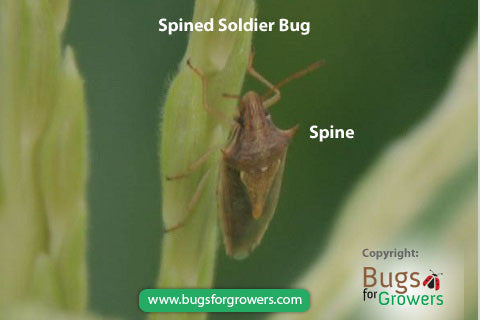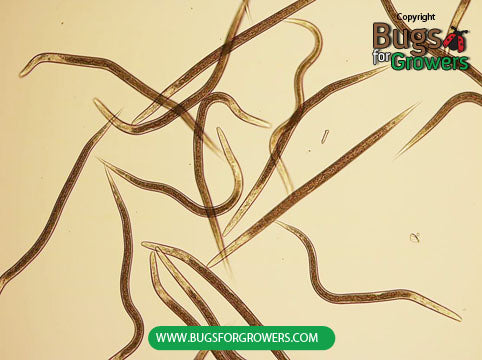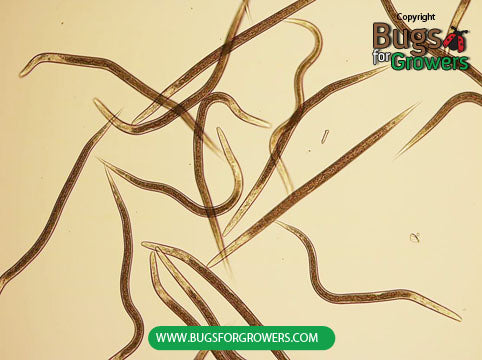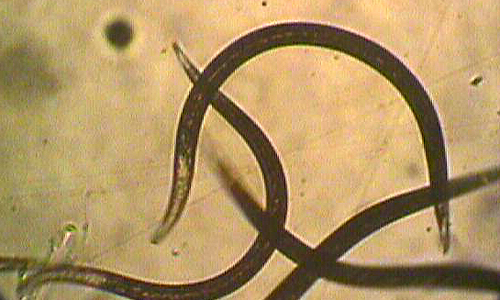Colorado potato beetle
Damage
Colorado potato beetles, Leptinotarsa decemlineata are one of the most damaging pests of potato, Solanum tuberosum in the United States. Generally, both adults and larvae of this beetle feed voraciously on leaves of potatoes and other host plants including tomato and eggplants. In case of severe infestation; colorado potato beetles can completely defoliate potato plants within a short period of time. Defoliation of plants can affect the bulking of potato tubers that in turn reduces potato yield.

Facts (show all)
- Taxonomy
-
- Common name: Colorado potato beetle , Colorado beetle, ten-lined potato beetle. It was named as “Colorado potato beetle” because it was thought to be native to Colorado.
- Scientific name: Leptinotarsa decemlineata
- Kingdom: Animalia
- Phylum: Arthropoda
- Class: Insecta
- Order: Coleoptera
- Suborder: Polyphaga
- Family: Chrysomelidae
- Subfamily: Chrysomelinae
- Genus: Leptinotarsa
- Species: L. decemlineata
- Identification
-
Adults: Adults of Colorado potato beetle are oval shaped, yellowish-orange colored with 10 black stripes, 5 stripes on each of two forewings (elytra). Both head capsule and thorax are orange in color. A triangular black marking is present on the thorax and several black spots on the head capsule.
Eggs: Eggs of Colorado potato beetle are yellow colored, oval shaped and commonly laid on the underside of the leaves in a cluster of over 50 eggs.
Larvae/grubs: Larvae of Colorado potato beetle are very small about 1.25 cm long with three pairs legs and dark reddish in color with two rows black spots along each side of the body.
Pupae: Pupae of Colorado potato beetle are reddish colored and oval shaped.
- Biology
-
Overwintering adults of Colorado potato beetle generally emerge from soil early in the spring. After mating in the spring, females lay yellow eggs on the underside of the leaves in a cluster of over 50 eggs and over 200 eggs during their lifespan. Eggs hatch into small larvae (grubs) within one week. After hatching from eggs, tiny larvae immediately start feeding on the leaves of host plants and become mature within 3 weeks by passing through four developmental stages. Matured larvae then move into soil for pupation. After 1- 2 weeks, adults emerge from pupae and life cycle continues. Colorado potato beetles can complete its lifecycle within one month and a total of 2-3 generations in a year.
- Biological control
-
Several chemical insecticides have been proved to be effective against Colorado potato beetles but unfortunately these beetles have developed resistance to many of them. Beneficial predatory insects and entomopathogenic nematodes can be used as the safe biological control alternatives to chemical pesticides in managing Colorado potato beetles. Both naturally occurring and inundatively applied beneficial entomopathogenic nematodes in the soil can find, infect and kill soil dwelling mature larval, pre-pupal and pupal stages of Colorado potato beetles. For example, mature larva of Colorado potato beetle that moves in the soil for pupation can be a very good target for beneficial entomopathogenic nematodes. Beneficial entomopathogenic nematode species including Steinernema carpocapsae, Steinernema feltiae, Heterorhabditis megidis, Heterorhabditis marelata and Heterorhabditis bacteriophora have shown a very high efficacy against adult, larval and pre-pupal stages of Colorado potato beetles. Of these 5 nematode species, Steinernema carpocapsae, Steinernema feltiae, and Heterorhabditis bacteriophora are commercially available and can be applied at the rate of 1 billion nematodes per acre for the effective control of Colorado potato beetles.
- Beneficial predatory insects
-
- Predatory spined soldier bug, Podisus maculiventris
- Beneficial entomopathogenic nematodes
-
- Heterorhabditis bacteriophora
- Steinernema carpocapsae
- Steinernema feltiae
- Research Papers
-
Armer, C.A., Berry, R.E., Reed, G.L. and Jepsen, S.J. 2004. Colorado potato beetle control by application of the entomopathogenic nematode Heterorhabditis marelata and potato plant alkaloid manipulation. Entomologia Experimentalis et Applicata. 111: 47-58.
Berry, R.E., Liu, J. and Reed, G. 1997. Comparison of endemic and exotic entomopathogenic nematode species for control of Colorado potato beetle (Coleoptera: Chrysomelidae). Journal of Economic Entomology. 90: 1528-1533.
Cantelo, W.W. and Nickle, W.R. 1992. Susceptibility of prepupae of the Colorado potato beetle (Coleoptera, chrysomelidae) to entomopathogenic nematodes (Rhabditida, Steinernematidae, Heterorhabditidae). Journal of Entomological Science. 27: 37-43.
Ebrahimi, L., Niknam, G. and Lewis, E. E. 2011. Lethal and sublethal effects of Iranian isolates of Steinernema feltiae and Heterorhabditis bacteriophora on the Colorado potato beetle, Leptinotarsa decemlineata. Biocontrol 56: 781-788.
Ebrahimi, L.,Niknam, G.and Dunphy, G.B. 2011. Hemocyte responses of the Colorado potato beetle, Leptinotarsa decemlineata, and the greater wax moth, Galleria mellonella, to the entomopathogenic nematodes, Steinernema feltiae and Heterorhabditis bacteriophora. Journal of Insect Science 11, Article Number: 75.
Nickle, W.R., Connick, W.J. and Cantelo, W.W. 1994. Effects of pesta-pelletized Steinernema-carpocapsae (all) on western corn rootworms and Colorado potato beetles. Journal of Nematology. 26: 249-250.
Trdan, S., Vidrih, M., Andjus, L. and Laznik, Z. 2009. Activity of four entomopathogenic nematode species against different developmental stages of Colorado potato beetle, Leptinotarsa decemlineata (Coleoptera, Chrysomelidae. Helminthologia. 46: 14-20.

